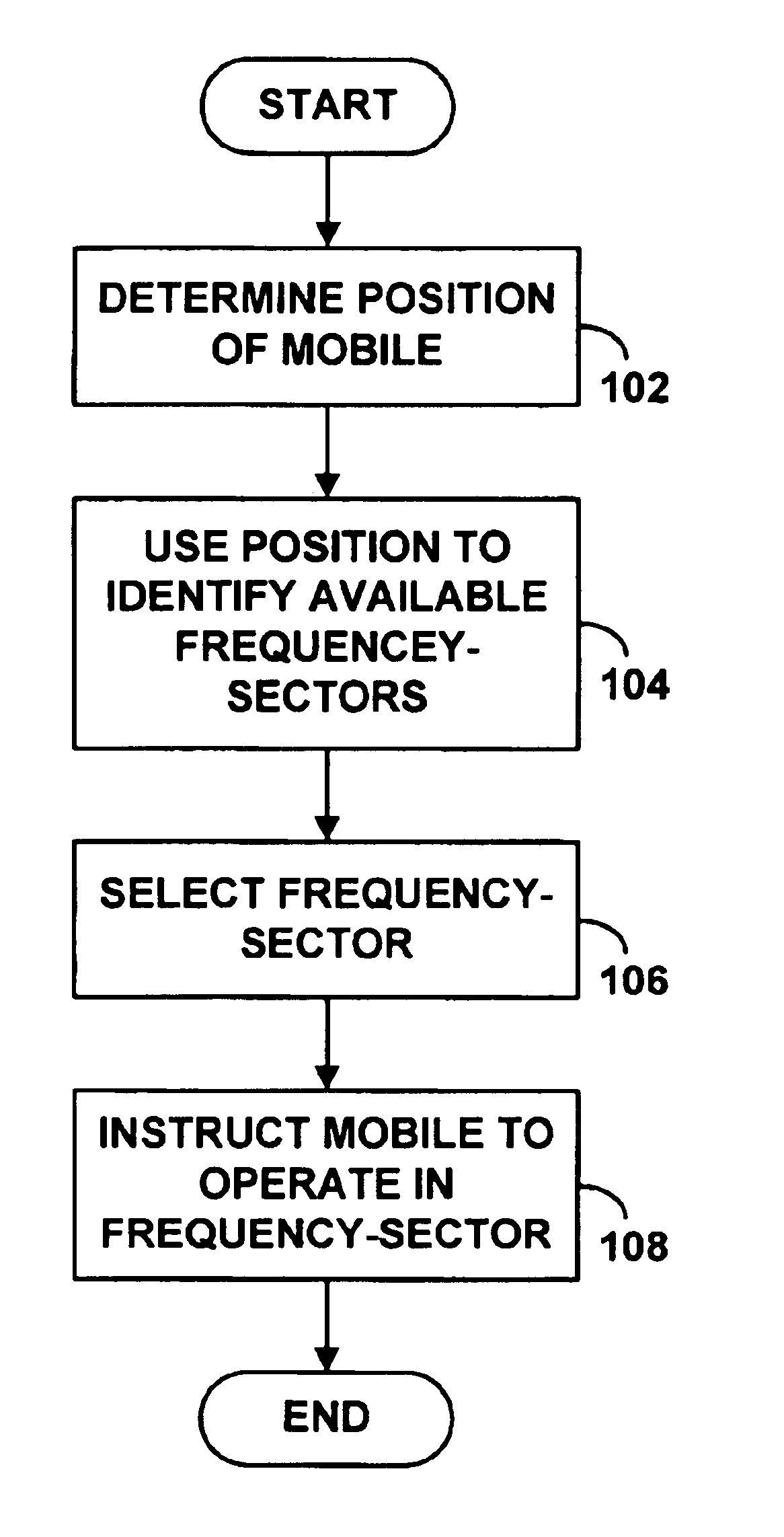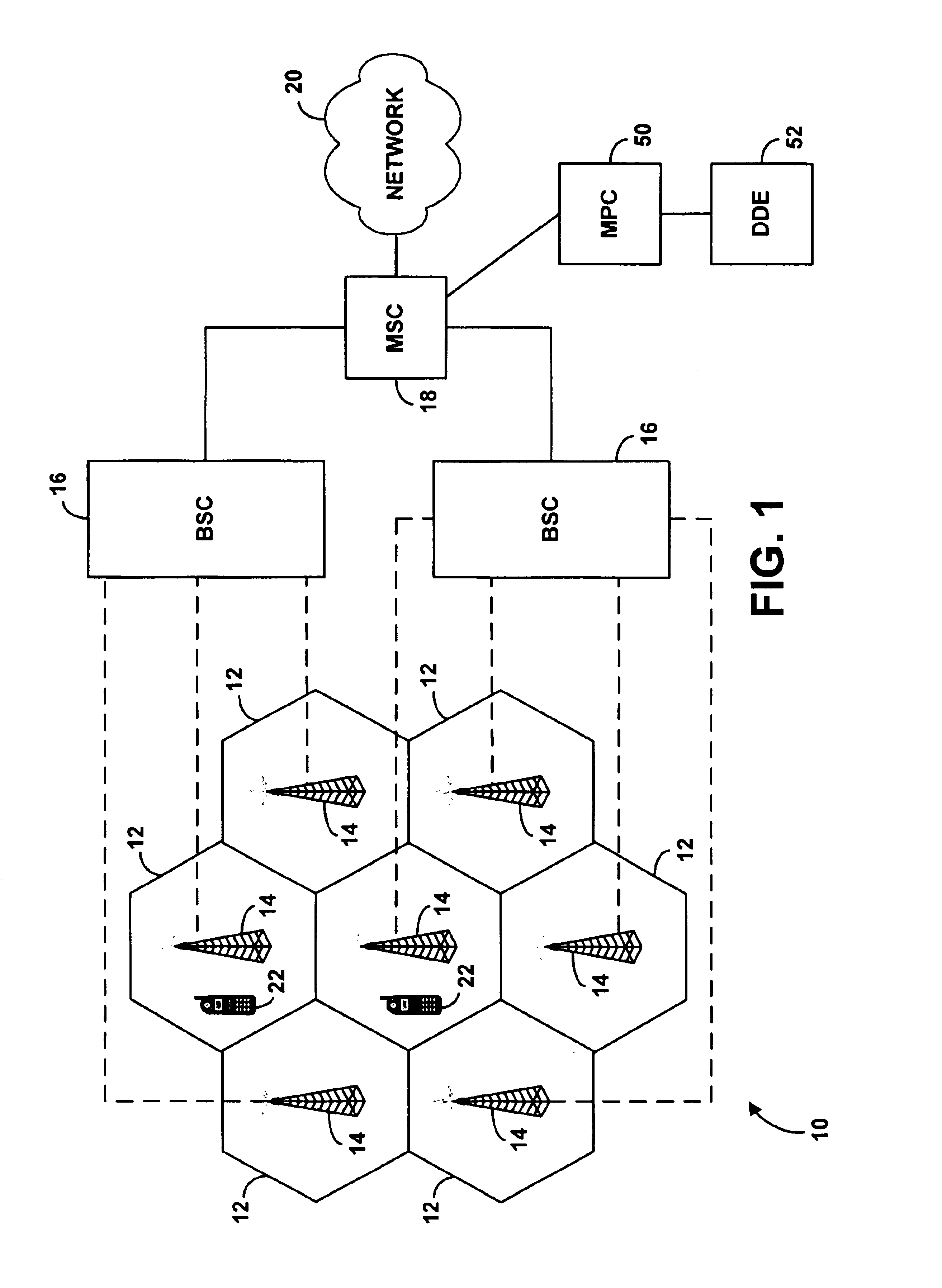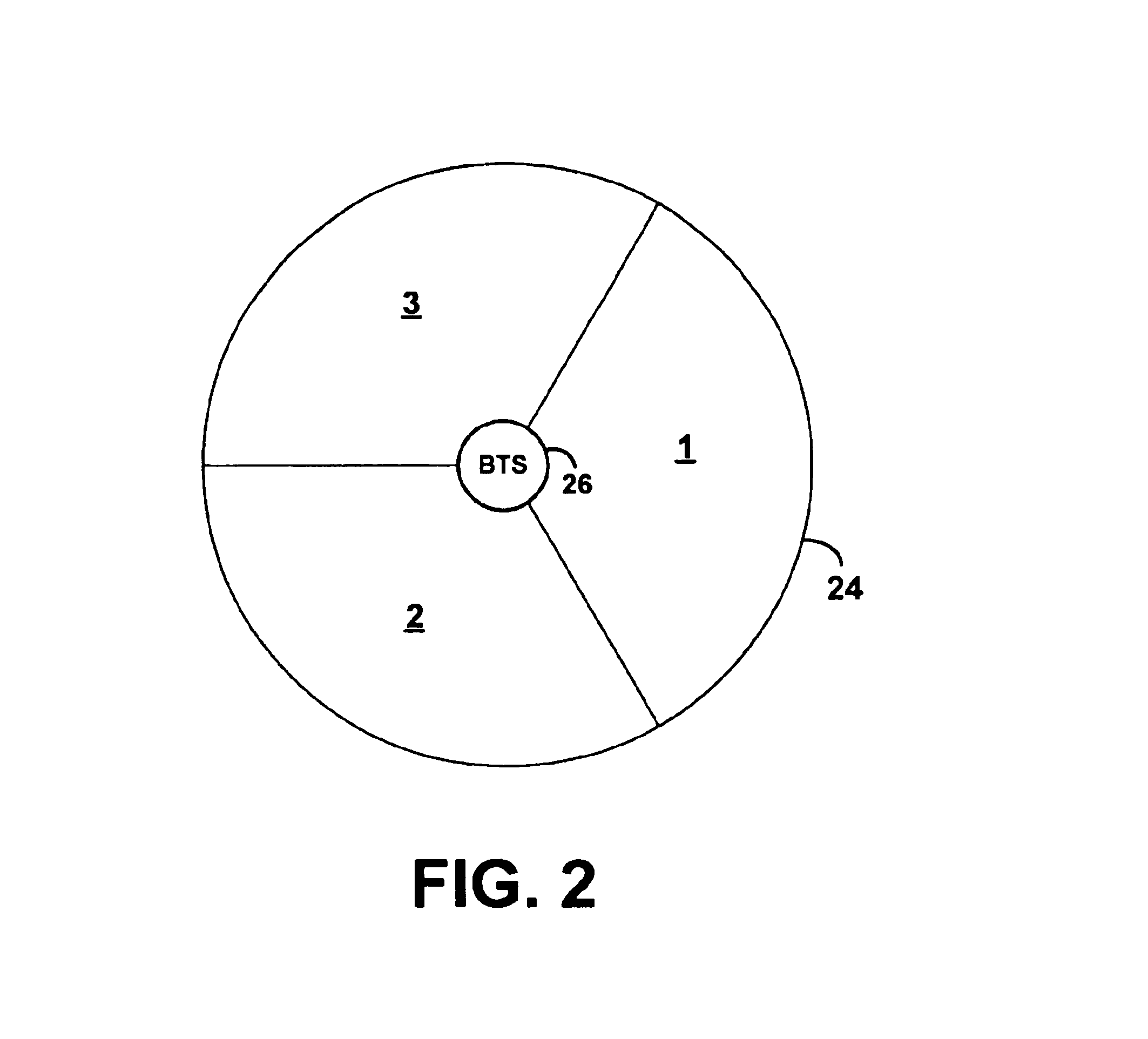Method and system for inter-frequency handoff and capacity enhancement in a wireless telecommunications network
a wireless telecommunications network and inter-frequency handoff technology, applied in the field of wireless telecommunications systems, can solve the problems of pilot beacons being expensive, unable to achieve the desired solution, and unable to meet the needs of users,
- Summary
- Abstract
- Description
- Claims
- Application Information
AI Technical Summary
Problems solved by technology
Method used
Image
Examples
Embodiment Construction
Referring to the drawings, FIG. 1 illustrates a simplified block diagram of a wireless telecommunications network 10 in which an exemplary embodiment of the present invention can be employed. As shown in FIG. 1, network 10 includes multiple cells or cell sites 12, each of which is defined by an RF radiation pattern from a respective BTS 14. FIG. 1 depicts each of the cells in an idealized fashion, as a hexagon that does not overlap other cells. In reality, however, most cells will overlap with neighboring cells and, due to topography, signal strength and other factors, may vary widely in shape and size.
In network 10, the BTS 14 of each cell site communicates with a BSC 16, which in turn communicates with an MSC or gateway 18. The MSC then communicates with a network, such as the PSTN or the Internet for instance. (Other intermediate elements may be provided as well.) In a typical arrangement, the BTS of a cell site manages the air interface between the BTS and...
PUM
 Login to View More
Login to View More Abstract
Description
Claims
Application Information
 Login to View More
Login to View More - R&D
- Intellectual Property
- Life Sciences
- Materials
- Tech Scout
- Unparalleled Data Quality
- Higher Quality Content
- 60% Fewer Hallucinations
Browse by: Latest US Patents, China's latest patents, Technical Efficacy Thesaurus, Application Domain, Technology Topic, Popular Technical Reports.
© 2025 PatSnap. All rights reserved.Legal|Privacy policy|Modern Slavery Act Transparency Statement|Sitemap|About US| Contact US: help@patsnap.com



